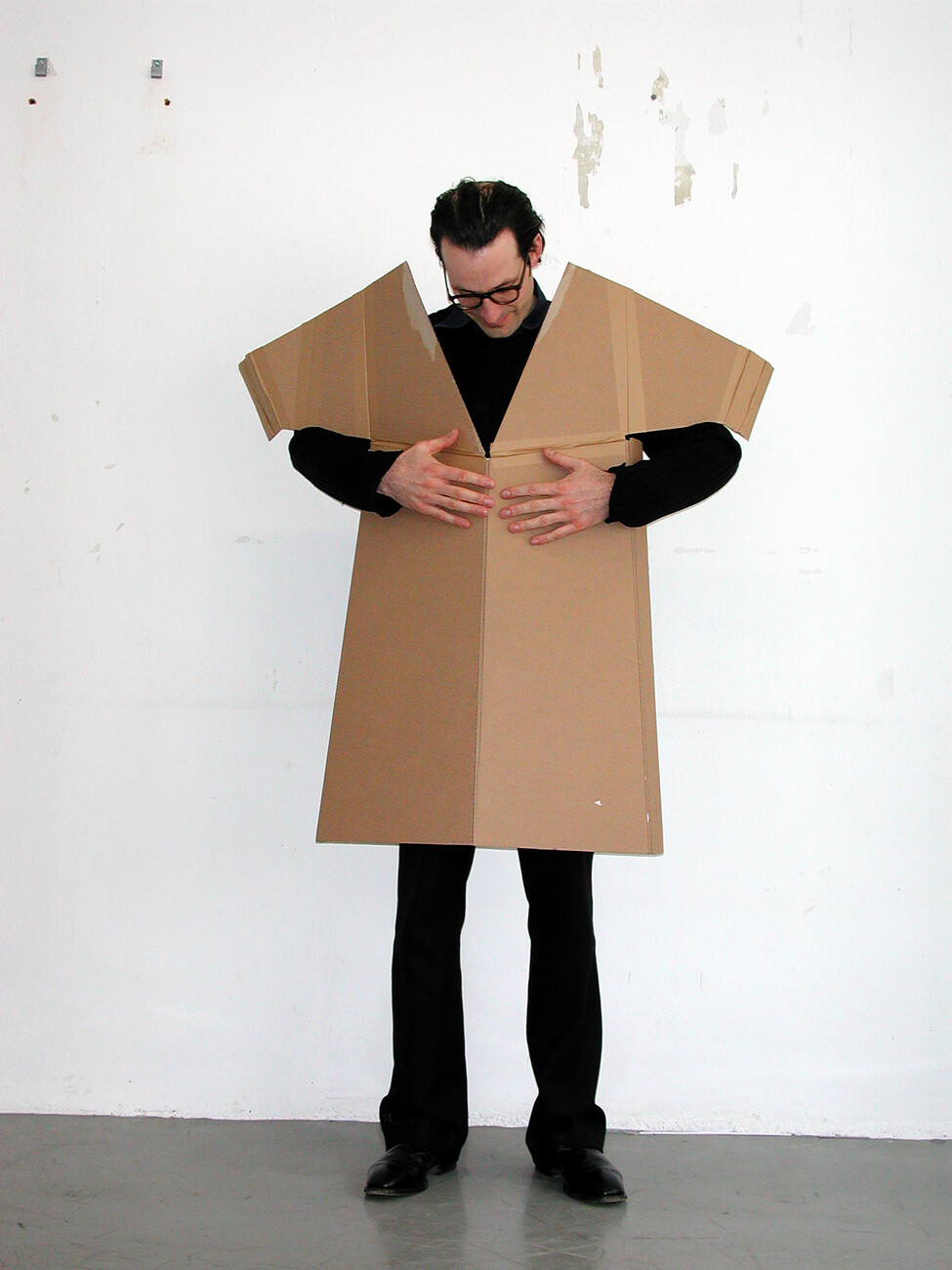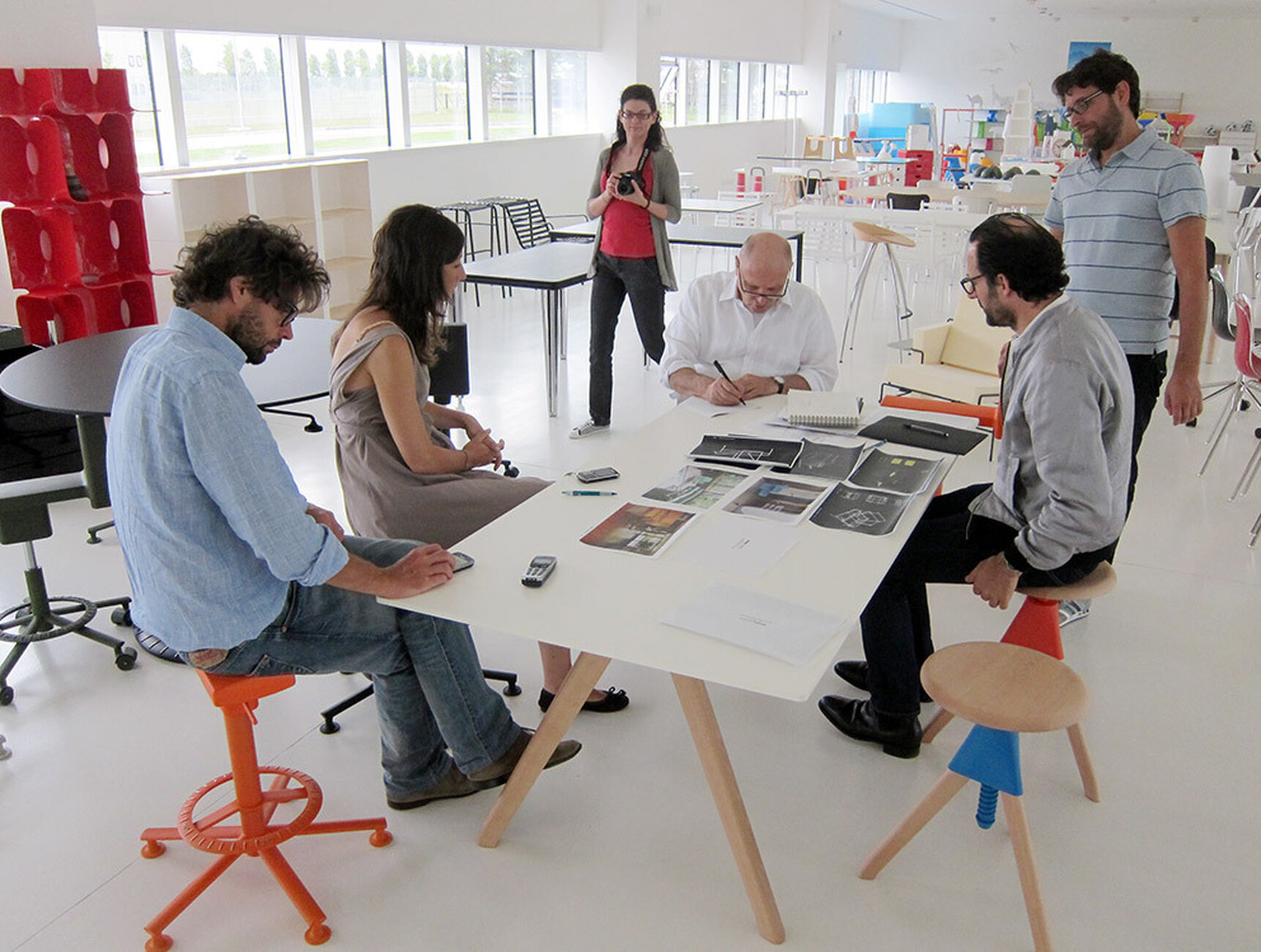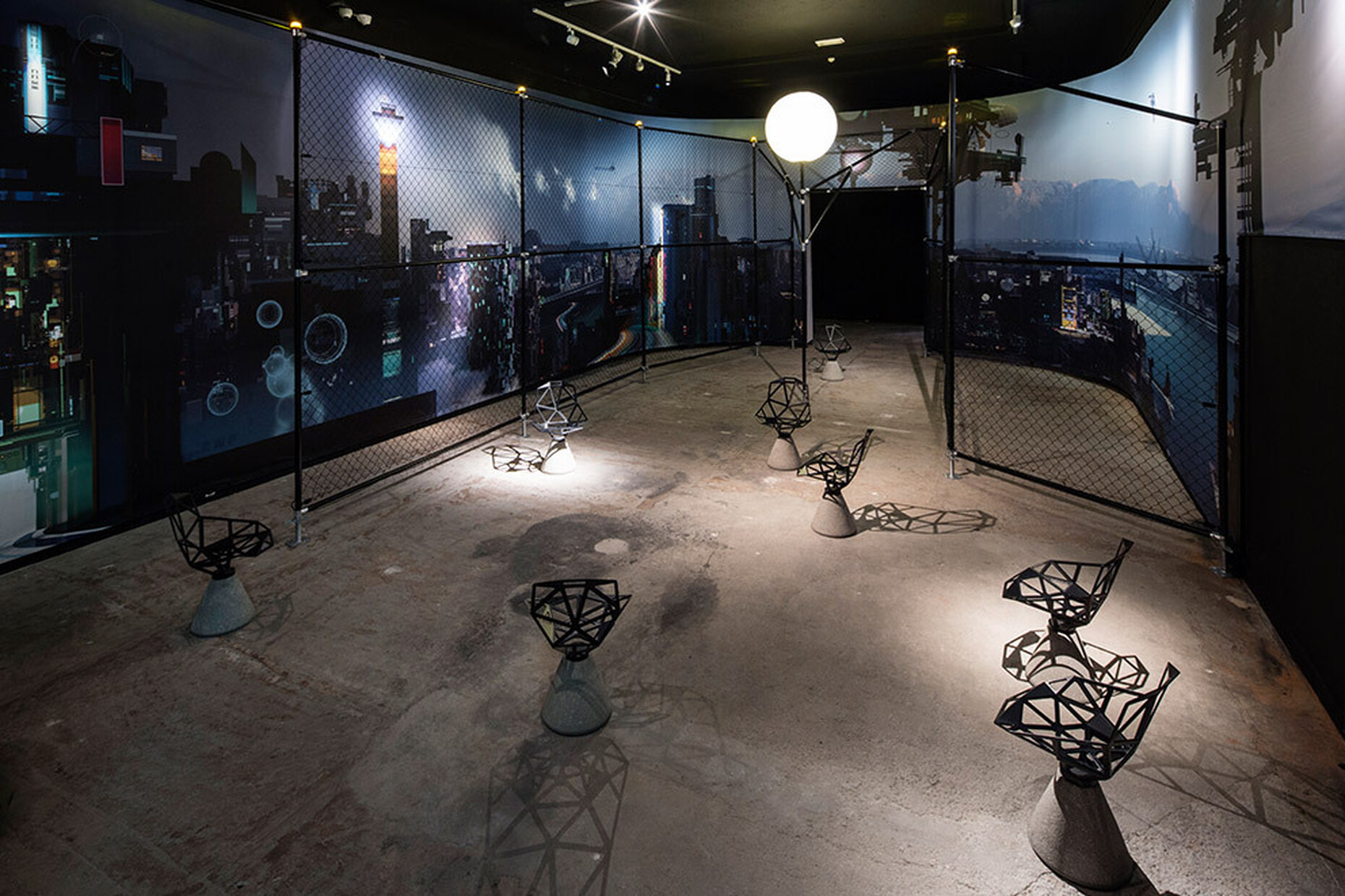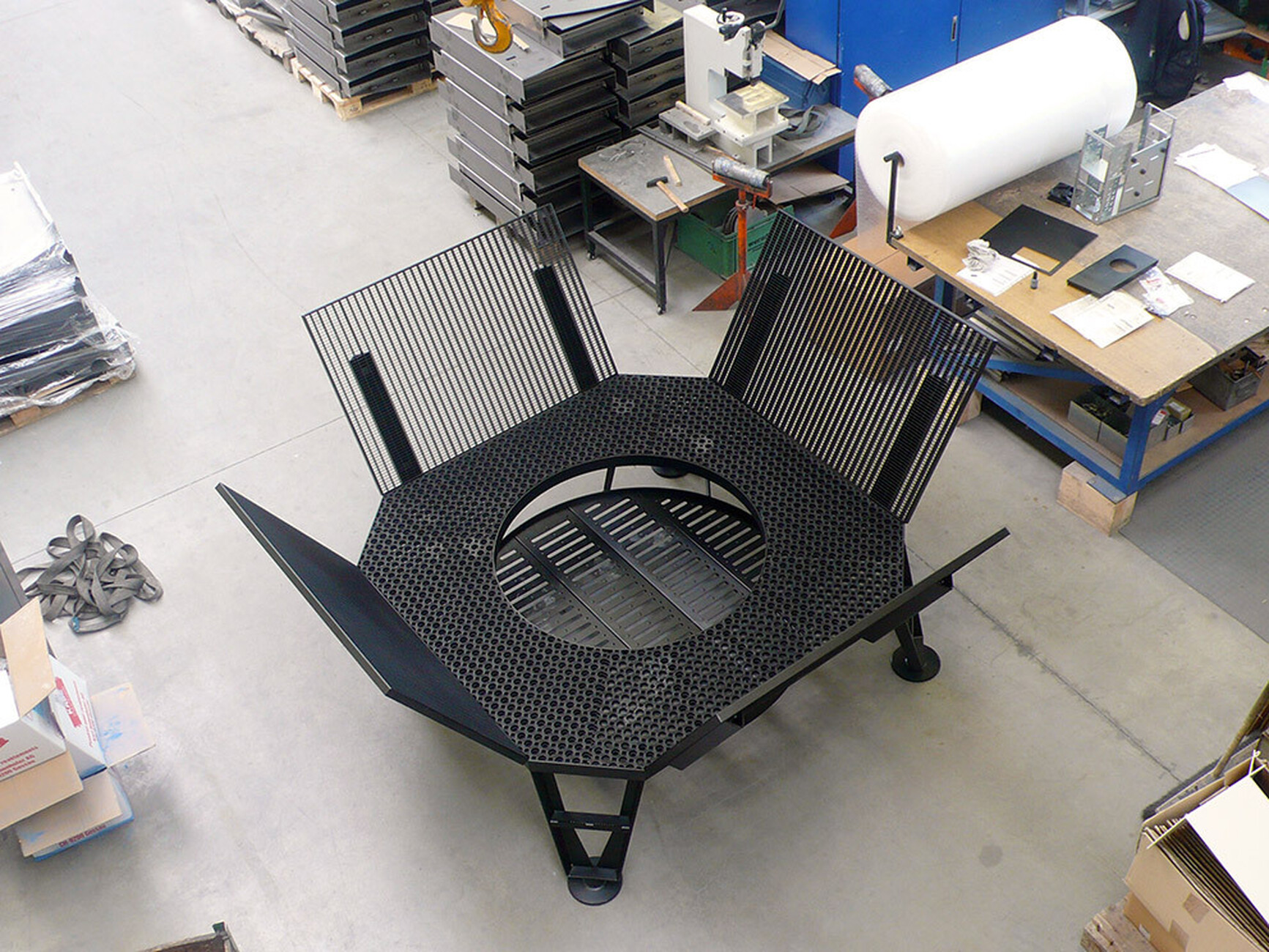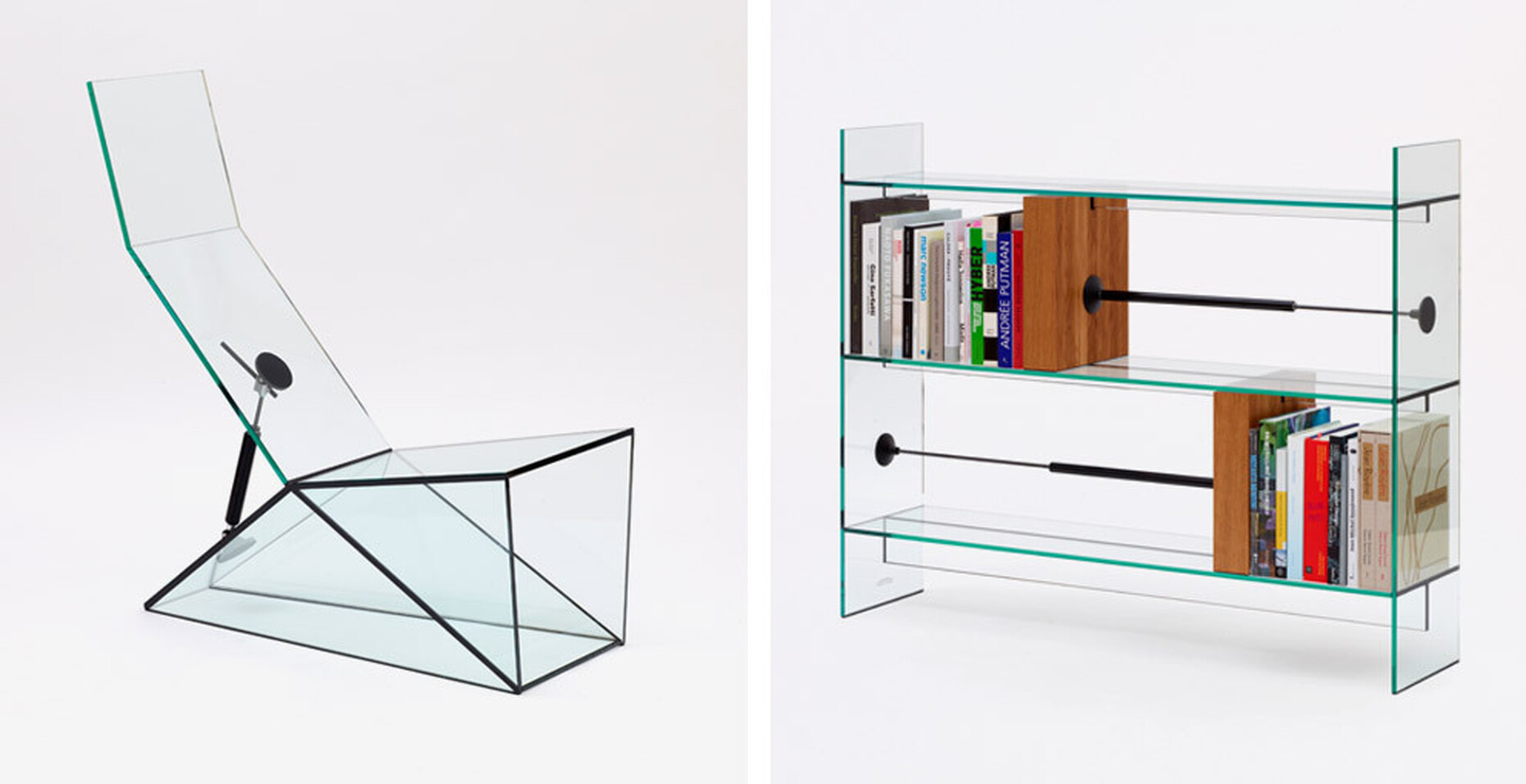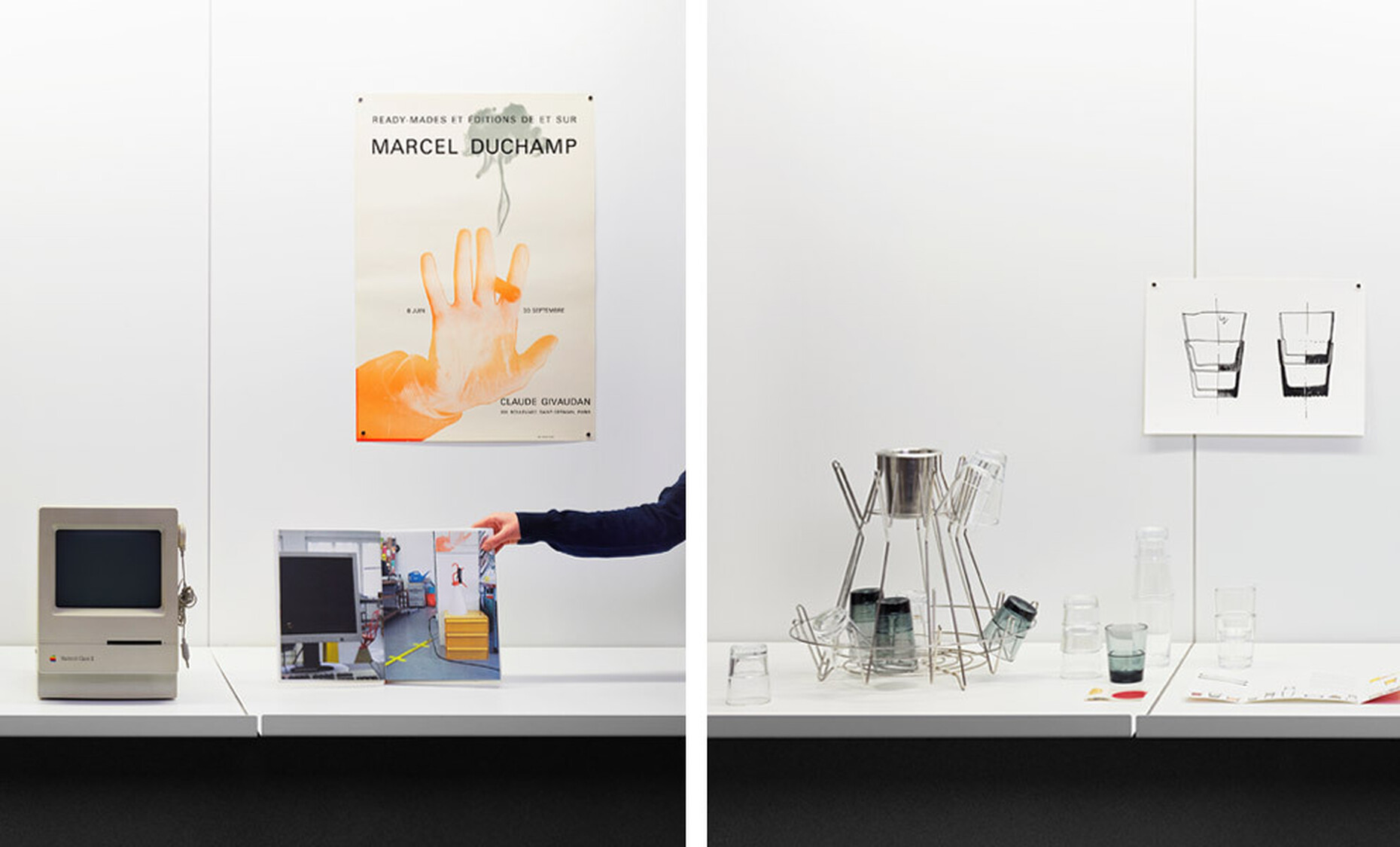Stylepark-Special: Retrospective: Konstantin Grcic in conversation – part 2
Work where you have the freedom do to so
Thomas Wagner: The catalog that accompanies your “Panorama” exhibition contains a photo of you and Jonathan Olivares in Marfa, Texas. It immediately catches the eye because Donald Judd lived and worked in Marfa. For Judd art and design expressed a way of life, an all-embracing activity. What contribution can design make to creating new ways of life? Does the chair on which I sit influence my perception of the room, my interaction with my surroundings?
Konstantin Grcic: Yes, the chair does play a role – also as an object. We know, it has existed for thousands of years and in countless different versions, and yet it still continues to play a role. As I said before, I think it’s important to get down to the bottom of things, as in not just talking about them but actually doing them. I think design is interesting in terms of how the word itself has taken on a different usage in the last 10 or 15 years – thankfully a
positive one. In the 1980s and even into the 1990s the word “design” often represented something inflationary, an extra nobody really needed, something that makes everything more expensive, etc. Making you shy away from using the word. Today the notion of design has been elevated to extend beyond its traditional realm. Design crops up in connection with politics, with strategies, with corporate culture and the business world. I think that’s
interesting because design actually harmonizes well with these domains. Design is analytical, first of all it designates a form of thinking. However, it also includes the process of developing a creative result from this analysis. Or, said differently, of thinking outside the box, of liberating oneself fromexisting rules or sheer facts, and saying: Now let’s approach things from the opposite end of the spectrum. This way design as a process actually achieves something that works wonderfully and is applicable and relevant to the things
we need today.
So, to drip things in pathos, is design about finding ways for the ‘right life’ after all? Is it about sitting right to be able to lead a “good life” in the sense of Antiquity?
Konstantin Grcic: Yes and no. I think we have long since abandoned this notion of what’s right. We know there isn’t such a thing as right. I believe it all comes down to asking the right questions. If you regard the design process as design thinking, as a way of thinking, then you will end up asking the right questions. Of course you will only get an answer with a view to a specific case. For only a very specific case will allow you to find a specific answer, which may turn out to be the right one.
So a solution is right not in a moral sense but rather in a pragmatic sense: How do you do it? How do you succeed?
Konstantin Grcic: This takes me to the third room in the exhibition, the public space. My impression is: This is precisely where this system stops functioning because it is here that the most diverse needs, opinions, power structures come together. What is right for one person is wrong for another, and that’s what we have to deal with. I think the right person for this job is the designer. For he can respond, create certain conditions or opportunities, to which others in turn respond. This is the role in which I see the designer.
Which means that the designers bear great responsibility?
Konstantin Grcic: Yes, and that’s the problem. Turning the designer into the savior who will solve all problems is very wrong.
I was talking about responsibility, not about being the savior.
Konstantin Grcic: Of course the designer has to bear responsibility, albeit as part of a group, within a very complex system.
Aren’t you ducking the question here? By saying that designers are expected and able to provide answers in a specific case it means they have to vouch for these answers and be responsible for them. Would you agree that even if the designer does not feel responsible for the greater good, the entire globe, he needs to be responsible precisely in the one or other specific case?
Konstantin Grcic: That’s right, responsibility is limited to something specific.
And yet people always act as if the designer were responsible for more than just a chair or a table…
Konstantin Grcic: That’s where things become complex. I mean, that’s what we have to deal with, that’s the way things are.
How do you deal with it? Especially when things you have made are perceived very differently by the outside world?
Konstantin Grcic: Often this outside view bears little relation on the specific situation that gave rise to the solution. And then it’s easy to say: “Oh, he has made yet another chair – why is he forever making chairs?” Of course I say: The chair is of great importance for the future. Nonetheless it’s this one, specific chair I am currently working on that takes my interest. And the company for which I am designing the chair plays a pivotal role here. I know this company, and this too shows my responsibility. Often it’s a family who runs this company, which happens to make chairs, it’s their line of business. And if they are not making a chair with me, they are making one with someone else. And that’s a good position to be in because I am really familiar with the situation. I know these people, I know where they live, what they do, I know their specific situation.
You are not faced with situations you are not connected with. You can intervene, make changes. It’s not some anonymous entity that gives you a job. It’s a family, it involves a specific relationship, a bond, perhaps even a friendship. Does designing mean having to forgo abstractions?
Konstantin Grcic: It’s about a culture, about a tradition.
And both are very important, not only for the design but also for the debate about how we can master the future?
Konstantin Grcic: Yes, and I think it is extremely important that we become aware of such bonds. Looking back, I have the feeling that projects that had real relevance for me, those that are important to mw, have always been those where I am very close to a real, a specific situation I know a lot about.
Does your work retain its validity in this sense, even if it is evaluated from a different perspective by someone who is not aware of these relationships?
Konstantin Grcic: Very definitely. From an outside point of view someone might say it’s just another stupid chair, and we really don’t need it considering the pressing problems regarding our future. And yet, this chair is important on the small scale, for example because it secures the existence of a particular company structure in northern Italy, and not only in terms of the jobs it provides. It’s also about a culture that is worthy of preservation because it is precious and beautiful. And if people ask me about my responsibility I would always say: That is precisely the contribution we are making. And it’s for others to say how it can be translated into the greater good. Maybe it can serve as a role model nonetheless, because even these small cells, these Northern Italian companies, and a lot of them are tiny, still make an impact.
Aren’t you being a little modest here? Your contribution is not small by any means. At a time in which countless established cultures are breaking off, isn’t it more important to support a particular culture of making things than to keep on saying how design had to save the world, albeit to little effect.
Konstantin Grcic: Yes, that is my sentiment entirely. And for the Italians the designer is indeed part of this culture.
Those who had the opportunity to speak with the senior director of one of these companies will grasp instantly that they are not just about selling furniture successfully. You get a sense of the roles played by tradition, style, a particular way of life. In turbulent times such as ours there is something beautiful and soothing about the way in which such entrepreneurs, often down through the generations, have shaped a way of life and indeed have nurtured it.
Konstantin Grcic: Yes, that is their life. And it’s amazing to witness it. In Italy this kind of sophistication and refinement is very prevalent. Mind you, I have also experienced the tragedy of something like that falling apart. Many of these companies no longer exist today. And that spells not only a loss of jobs.
It affects the entire family, which has for generations devoted itself to this company, has built it up, and which in turn was the supplier for someone, and this person was able to have dinner at his local restaurant simply because he had work. It’s a close-knit network and it’s important we preserved it. Of course this structure too should be able to advance, and this inevitably affects these companies, they have to close because they didn’t succeed in keeping abreast with the changing conditions. And here the designer indeed
plays a role because we are so much more than the masterminds behind some chair. It’s kind of crazy, when I work with such companies I am never briefed. We know these companies, and so we begin to consider: “What are we actually doing together?” After all, the designer’s effort begins at the point when he asks himself: What does this company really need? Are we really going to make a chair for them? Mattiazzi is a good example. The reason they are so successful – and I would regard them as a very modern company – is because they do what they are good at. And they do it well. And the reason they do it well is because they can look back on a wealth of experience – simply because the company specializes in chairs. Everyone there is an expert in what they do, and that makes them so vibrant. At the same time it is tragic to see that in the region around Udine, which is where Mattiazzi has its headquarters, around 50 percent of the companies have had to close. And I’m talking about companies that were still active when I started out 20 years ago.
Womit wir wieder bei dem merkwürdigen Verhältnis vom großen Ganzen zum konkreten Einzelfall angekommen wären.
Konstantin Grcic: Yes, the same generation, the same conditions, the same place – and yet there are some who do things slightly differently and have managed to draw the right conclusions from this specific situation.
In your “Public Space”, aren’t the panorama and the fence all about this ambivalence? It’s not so clear to me: Is it a brave new world or an apocalyptic scenario, in which “Landen”, this Mars rover or landing device that looks like it was left behind on the moon, takes center stage? But above all the fence with its two sides and the yellow warning lights. Either you are in or you are out – isn’t that the message?
Konstantin Grcic: Sure, though the fence in this Third Space is less confusing compared to the view of the airport in the First Space. I didn’t think the image would work on its own, which is why I wanted to add a third dimension and give it a physical, a genuine quality, which would be immediately apparent in the picture. It’s like using a scenographic trick. On the other hand, the fence is steeped precisely in this symbolism, and that’s what I wanted to convey.
Which side of the fence am I on? Does it protect me or does it exclude me? Am I on the good side or the bad side? And I regard the panorama in the same sense, so yes, it’s ambivalent. Is this a brave new world or is it threatening? I should add: As far as the panorama is concerned, it was important for to me to hand part of the production elsewhere. Remember we commissioned somebody I don’t know, and didn’t want to get to know, with the picture. Of course we communicated about things, but we didn’t know each other. I’m not sure I would do things that way again, it was pretty stressful, and difficult, but it was precisely this situation I found exciting.
Let’s stay for one moment with the notion of the fence as a border. Somebody always pays the price for our prosperity. Does the fence for you also mark a kind of border around our island of prosperity?
Konstantin Grcic: We had this debate at the museum, too. For Mateo Kries the fence had something threatening and negative about it. It’s the same for me, and yet it’s above all a reality that gives rise precisely to the questions we are addressing. That’s what makes a public space so exciting: It’s there, and it’s we who decide how it will unfold, because we meet up there and have a good time, or because we meet and trash the place and give off bad vibes.
And perhaps never leave it again in the end?
Konstantin Grcic: That’s right, and that’s what it’s all about. I’m not sure if it works this way in the exhibition.
If you had the power to change the world, what would you do? The question is absurd, I know...
Konstantin Grcic: Yes, it is absurd, which is why I believe it’s not relevant.
That’s what everyone says. Maybe it’s not in our power to change the world, but maybe we need to do more than we are able to? Would you agree?
Konstantin Grcic: There are so many aspects to it – we are dealing here with an extremely complex system. Yet even exclusive projects in the luxury ghetto will kickstart certain things. When I was a design student and starting out on my career I had this notion that designers work for the masses. And yet for me it never actually turned out to be that way. This probably has to do with the way I am, with my perception of things, with the way I do stuff. I am privileged to work for exclusive companies, for luxury goods companies, and they are really good companies. They represent the avant-garde, and they are better because they are ahead in their thinking. We can do something for such companies on a
very small scale, and yet I know that reach and effect, in other words, charisma and brilliance, are extremely important. I think Apple is a good example. Apple used to be a luxury brand and a niche brand. Today everyone regards Apple as the trailblazer in terms of expectations, quality, user-friendliness and intelligence. Sure, this example is extreme. As I said before, I think the smaller scale offers better possibilities for change, and that’s the niche or the exclusive or something else that guarantees freedom.
So is something that is well-made and one step ahead necessarily luxury? Isn't it illusory to think that trash is always good and the rest is pure luxury? Wouldn't this be a strange way to define culture?
Konstantin Grcic: No, I don't see it that way. We work in this niche, and a niche always arises where it has the freedom to do so, where there are possibilities to do things. If I were to work ... I can't think of a good example right now, and it would be silly to use IKEA as the antithesis. IKEA is likewise top of the list, they are also up there with the best, and in that sense they are exclusive. And to work for them means: mass production. That said, if you work for IKEA you probably have far more options than if you worked for the likes of
Segmüller.
Would you ever consider working for Segmüller? Would it be meaningful to try out something in this sphere? Would you be interested in doing that?
Konstantin Grcic: Sure, I wouldn't mind...
Really - Konstantin Grcic working for Segmüller?
Konstantin Grcic: I would certainly have my reservations. But if I had the chance I wouldn't let it go unchecked. Who knows, Segmüller might be at this point right now - perhaps there's a new head who says: “We need to make changes.” However, there would only be a common ground if they suddenly adopted a different outlook.
Isn't this also about, let's say, providing educational impetus? Do you believe design can educate people's aesthetic appreciation?
Konstantin Grcic: I am interested in design and aesthetics, but not in an educational sense. As regards design and education I'm interested in quality, which of course is a highly difficult concept that first needs to be defined.
For me, quality is more fundamental than is aesthetics. And quality begins with the culture that is behind it.
I was thinking less of “the good form”. Sitting upright, wearing the right kind of clothes - it's not about that. When I think of aesthetic education I have Friedrich Schiller in mind. He was a freak, a rebel, and very much admired by the wild young Romantics. So when Schiller spoke of the necessity of educating Man aesthetically, he was posing a fundamental question: How can we shape a society, how can we bring about change? Schiller turned against the arbitrariness of reason, however, disappointed about the course of the French Revolution, he equally turned against the people's rule. We might find this strange today, but for Schiller the path to freedom led to beauty first. And if we attached a little less importance to this notion of beauty then it may not be so far removed from the freedom you mentioned earlier. Do you agree?
Konstantin Grcic: I think today beauty no longer takes on a particular guise or aesthetic, rather beauty lies in the intelligence of a design. It has to do with honesty and sincerity. That's what it's about, and for me design is definitely related to that. Today beauty is associated too much with the surface of things. An example: Apple is reduced to what its devices look like - everyone loves them, we think they are beautiful, and yet, what really sets this company apart is perfectionism. In other words its attitude: “We want to do it differently, we are not happy about the fact that PCs are the way they are ...”
Let’s turn to the Object Space at the exhibition. One of the display cabinets contains a poster of Marcel Duchamp, you see how he is holding his cigarette and the smoke rising up, and below there is a catalog showing his ready-mades. Duchamp likewise fought against good taste. What did you find fascinating about Duchamp? Why did you select the poster and catalog for the display cabinet?
Konstantin Grcic: I’m interested in Duchamp as an artist who worked with objects from our world. His attitude was that of refusal – or of wanting too much ...
And, being his ironic self he said: If I think about what I am, I have to say I’m actually a breather, a respirator.
Konstantin Grcic: That’s right.
Does this have to do with the fact that nowadays we talk less about the object and more about the process – including in design? Breathe in, breathe out, breathe in – doesn’t this capture the process rather aptly?
Konstantin Grcic: It beautifully describes the work of a designer. That said, Duchamp stands alone and I have difficulties simply transferring this image.
But I do like it. I always say design is a lot of work – and I like that too.
But it’s equally as important that design retains its effortlessness, easiness, playfulness. The design process has to be a conscious effort, yet it must never be forced. And this quality is crucial.
So what intrigued you about the ready-mades?
Konstantin Grcic: Duchamp’s ready-mades are very ordinary items we tend to overlook. Suddenly you see them from a different angle and recognize a beauty or a value that extracts them from their banality and transforms them into something special. Our way of looking at them has suddenly changed – and that element is inherent in design of course. Design is also about very ordinary things. Sure, the idea is not to transform things into works of art, and yet they are transformed into objects we begin to value and appreciate because we are seeing them with different eyes. It’s about respect, which takes us back to
the designer’s responsibility. But perhaps this notion is slightly too grand.
Konstantin Grcic – Panorama
through May 24, 2015
Z 33 House for Contemporary Art
Zuivelmarkt 33
3500 Hasselt / Belgium
